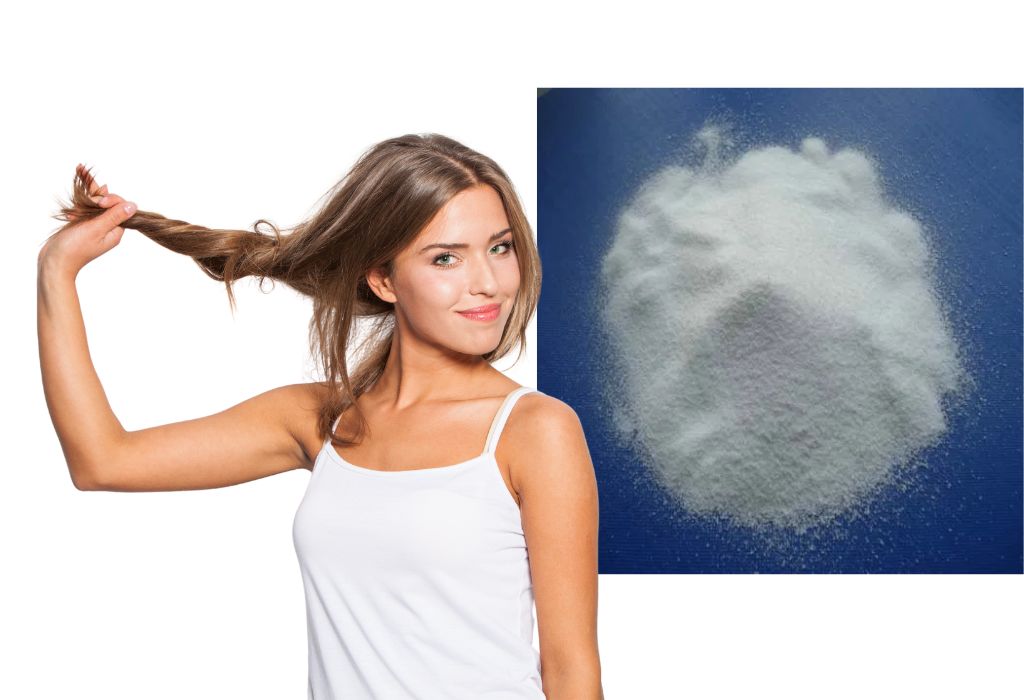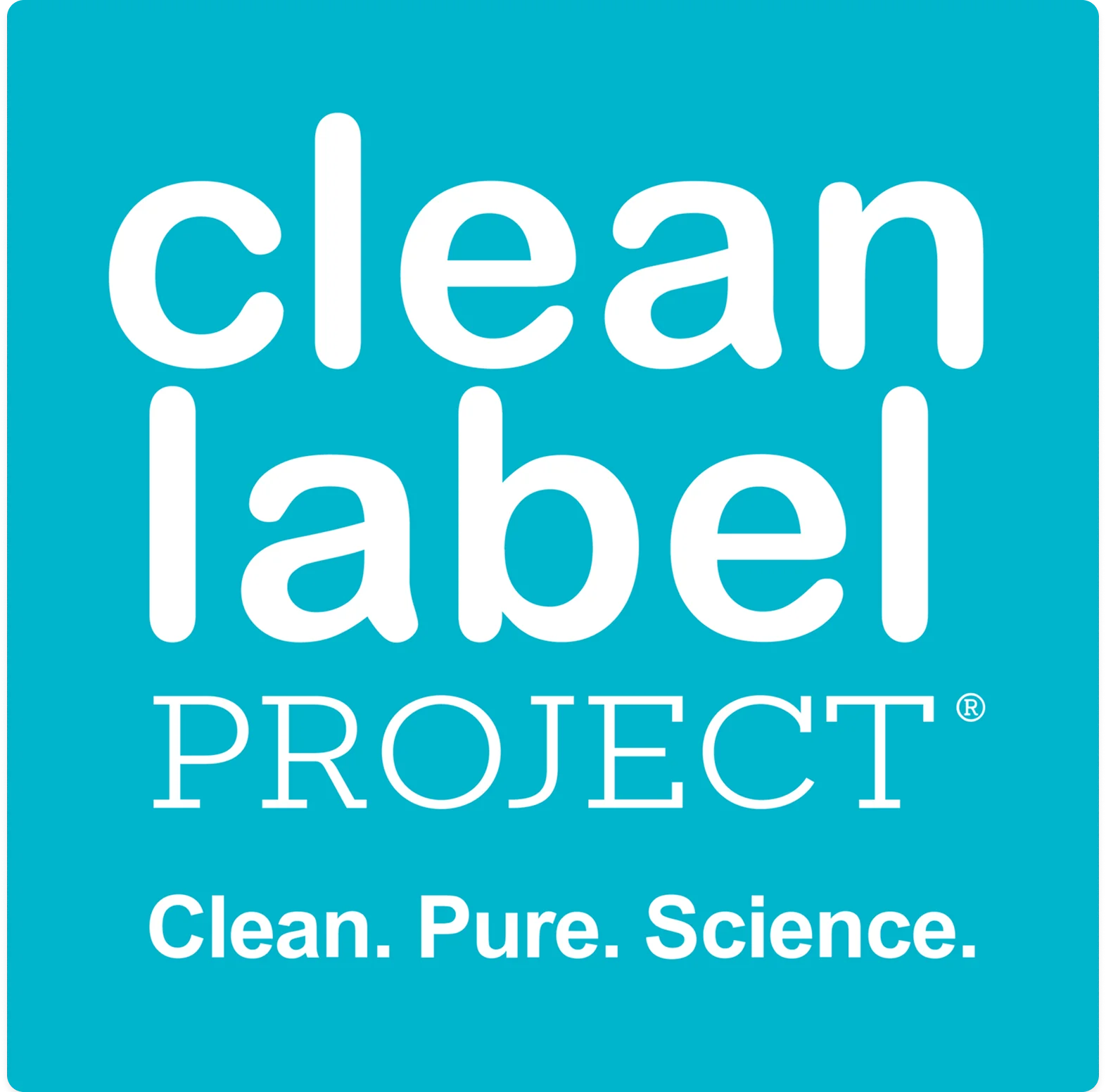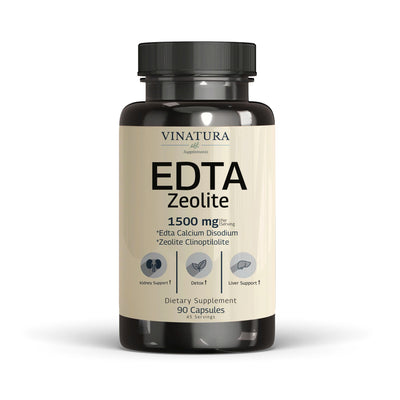
Is EDTA In Hair Products Good for Hair? Does It Cause Hair Loss?
EDTA (ethylene diamine tetraacetic acid) is beneficial in hair care products because it helps remove buildup, improves product effectiveness, enhances hair texture, reduces scalp irritation, and keeps hair color vibrant. If you look at the ingredients list on your favorite shampoos or conditioners, you'll probably find Disodium EDTA included. This might lead you to ask, "Is EDTA good for my hair. Does it cause hair loss?" I'll cover all of that in this post!
Before exploring further, please read the disclaimer located at the end of this webpage.
Key Takeaways
- EDTA helps remove dirt, oils, and mineral buildup from hair, leaving it clean and refreshed.
- Studies confirm that EDTA is safe in hair care products and does not cause hair loss when used appropriately.
- By removing mineral residues, EDTA enhances hair texture, making it softer, silkier, and healthier.
- EDTA helps maintain vibrant hair color by preventing metal ions from interacting with hair dyes.
- While beneficial for hair, EDTA is synthetic and does not biodegrade easily, raising concerns about its environmental impact.
What Is EDTA In Hair Products?
Disodium EDTA is a type of salt derived from ethylenediaminetetraacetic acid called EDTA. It appears as a white, odorless powder with a mild salty taste.
In cosmetics, it mainly works as a chelating agent. This means it helps prevent other ingredients in a product from reacting with small amounts of minerals commonly found in water or other ingredients. By doing so, it helps keep cosmetic products stable and effective over time.
Additionally, EDTA supports preservatives by binding to minerals that microbes need to survive. This prevents these microbes from spoiling the product, which helps maintain its color and flavor.
Is EDTA In Shampoo Safe for Hair?
Yes, various studies by the Cosmetics Review Board have determined that EDTA is safe when used in shampoos for hair.
They found that at the levels used in hair care products, disodium EDTA does not cause skin irritation or cancer, and it does not absorb through the skin.
What Are the Benefits of EDTA for Hair?
EDTA Cleans Hair
One of the main benefits of EDTA in hair care is its ability to remove dirt and oils from the hair and scalp, leaving your hair feeling clean and refreshed.
Disodium EDTA acts as a chelating agent by binding to metal ions found in hard water and hair products, like calcium, magnesium, and iron, making them easier to wash out.
These metal ions can cause the hair to become dry, dull, and brittle as they accumulate. By helping to remove these ions, EDTA enhances the health and appearance of hair and scalp.
If you use styling products, swim in chlorinated pools, or live in areas with hard water, you will find EDTA particularly beneficial in your hair care routine.
Removes Buildup
EDTA (ethylene diamine tetraacetic acid) can remove mineral and chemical buildup on the hair. This accumulation of minerals and chemicals over time can cause the hair to become dull, dry, and brittle.
Disodium EDTA binds to various minerals and metals, including chromium, iron, lead, mercury, copper, aluminum, nickel, zinc, calcium, cobalt, manganese, and magnesium.
A shampoo that uses chelating agents works by using special molecules to latch onto minerals, dirt, and leftover shampoo in your hair.
These agents form a sort of cage around these unwanted substances, effectively removing buildup that can damage your hair and scalp. With the help of disodium EDTA, these residues are removed, helping the hair and scalp become clean and revitalized.
Hydrates Hair

When chemical and mineral residues build up on your hair, they create a barrier that prevents moisture from penetrating the hair shaft. This can make your hair dry, lifeless, and brittle.
Using products like conditioners and deep conditioning treatments that contain disodium EDTA helps to keep the hair hydrated, soft, and flexible.
It restores and maintains a healthy moisture balance by removing the residues that can damage and dry out the hair.
As a result, your hair looks soft, silky, and healthy. Additionally, EDTA invigorates your scalp by clearing away harmful residues, enhancing the overall appearance and health of your hair.
Does EDTA Cause Hair Loss?

The answer is NO! EDTA is not an ingredient that causes hair loss.
Usually, the use of chemicals can lead to hair loss, but EDTA is a salt that acts as a chelating agent for metals and minerals.
Added to shampoos, EDTA enhances their foaming capabilities and is water-soluble, functioning effectively as a chelator. This means it attaches to mineral ions to deactivate them.
Such a property allows EDTA to help prevent hair loss by clearing away minerals that might have built up in your hair. EDTA also serves as a protective agent in hair care by preventing metal deposits on your scalp and hair.
Side Effects May Happen When Using EDTA For Hair Care
EDTA is generally safe for hair care as long as it doesn't get under your skin.
People with sensitive skin should talk to their dermatologist about using products with EDTA, as they might get rashes, redness, hives, swelling, or itching.
Pregnant women and nursing mothers should also check with their doctor before using hair care products with Disodium EDTA or related chemicals. If you notice any of these side effects, stop using the product and consult your doctor.
However, most people can use hair care products containing EDTA without any side effects.
How To Use EDTA For Hair Care?
Clarifying Shampoo
Use a clarifying shampoo that includes Ethylenediaminetetraacetic Acid (EDTA) in its formulation.
Here’s how to use a clarifying shampoo:
- Wet your hair: Start with thoroughly wet hair to ensure the shampoo can be distributed evenly.
- Apply the shampoo: Squeeze out a sufficient amount of clarifying shampoo and apply it to your scalp and hair. The amount needed can vary depending on hair length and thickness.
- Massage: Gently massage the shampoo into your scalp with your fingertips.
- Extend the lathering down to the tips of your hair. Spend a couple of minutes massaging to ensure the product penetrates well and targets the residues and buildup.
- Rinse thoroughly: Rinse your hair thoroughly under clean, running water. Make sure all shampoo is washed out to prevent any residue.
- Frequency of use: Use the clarifying shampoo once a week or adjust the frequency as needed based on your exposure to hard water, heavy styling products, and pollutants. Overuse can strip hair of its natural oils, so it's important to monitor how your hair responds and adjust accordingly.
This routine helps maintain clean, healthy hair by effectively removing buildup that regular shampoos might leave behind.
Conditioning Regimens
Look for hair conditioners or deep conditioning masks that list EDTA among their ingredients. These products can help to neutralize metal ions that might cause brittleness and dullness in your hair.
Here’s how to effectively use these conditioning regimens:
- Choose the right product: Look for conditioners or masks specifically stating that they contain EDTA among their ingredients. These products are formulated to combat the adverse effects of metal ions and help in maintaining the integrity and shine of your hair.
- Shampoo first: Always start with a thorough shampooing. This cleanses your scalp and hair, removing build-up and preparing your strands for deep conditioning.
- Apply the conditioner or mask: After rinsing out the shampoo, apply your conditioner or deep conditioning mask generously. Spread it evenly throughout your hair, from the roots to the tips. For long or thick hair, you might need to use more products to ensure full coverage.
- Leave it on: Follow the instructions on the product regarding how long to leave the conditioner or mask in your hair. Typically, a regular conditioner requires a few minutes, while deep conditioning masks might need to be left on for anywhere from 5 to 30 minutes depending on the product’s formulation and your hair’s needs.
- Rinse thoroughly: After the recommended time, rinse the product out of your hair thoroughly with clean water. Make sure no residue remains as this can make your hair feel heavy and greasy.
Using EDTA-containing hair conditioning regimens regularly can significantly improve the texture and appearance of your hair, making it less prone to damage from environmental factors and chemical treatments.
Hair Serums and Leave-In Products

Some hair serums and leave-in treatments containing Ethylenediaminetetraacetic Acid (EDTA) can be particularly beneficial for protecting your hair from environmental damage while enhancing shine, and maintaining the hair's health and appearance.
Here's how to use it effectively:
- Select the appropriate product: Choose a serum or leave-in treatment that lists EDTA among its ingredients. These products are formulated to provide extra protection and benefits, particularly for those living in areas with hard water or high pollution.
- Apply on damp or dry hair: These products can be applied to either damp hair after washing or dry hair. Damp hair application is ideal for maximizing absorption and ease of distribution, whereas applying on dry hair can help manage frizz and add instant shine.
- Focus on the ends: The ends of your hair are usually the most damaged and prone to splitting, so concentrate the application on these areas. Use a small amount of product to avoid oversaturation, which can lead to a greasy appearance.
- Spread evenly: Use your fingers or a comb to distribute the serum or treatment evenly through your hair. This ensures that all areas prone to damage are covered, providing uniform protection and conditioning.
- Style as usual: After applying your hair serum or leave-in treatment, you can style your hair as you normally would. These products not only protect but also enhance the styling process by making the hair more manageable and easier to work with.
Pre-Swimming Protection
To protect your hair from damage and discoloration before swimming in chlorinated pools, consider using a leave-in conditioner or hair serum that contains Ethylenediaminetetraacetic Acid (EDTA). This ingredient helps prevent chlorine and other minerals in the pool water from binding to your hair, offering effective protection.
Here are four key steps:
- Choose the Right Product: Opt for a leave-in conditioner or hair serum that includes EDTA in its ingredients list. This helps prevent chlorine and other minerals from binding to your hair.
- Apply Before Swimming: Generously apply the product to either damp or dry hair before entering the pool. Ensure full coverage from the roots to the tips, emphasizing the ends which are more prone to damage.
- Rinse After Swimming: Immediately after swimming, rinse your hair thoroughly with clean water to remove any chlorine and mineral residues.
- Reapply Conditioner: Post-swim, consider reapplying a small amount of leave-in conditioner to help replenish moisture and further protect your hair from any residual chemicals.
By following these steps, you can significantly shield your hair from the effects of chlorinated water.
What Should You Consider When Using EDTA for Hair Care?
Here’s what to consider when using EDTA for hair:
- Frequency of Use: While beneficial, products containing EDTA should not be overused. Frequent use can lead to stripping away too much natural oil, which might leave hair dry and brittle. It's generally recommended to use clarifying shampoos with EDTA once a week or less frequently depending on individual hair needs.
- Hair Type Sensitivity: People with dry, brittle, or color-treated hair should use EDTA-containing products cautiously. Although it helps in removing mineral buildup, it can also strip away moisture and essential oils if overused.
- Environmental Concerns: EDTA is synthetic and does not biodegrade easily, which raises concerns about its environmental impact. Its widespread use can contribute to ecological issues, as it may accumulate in water systems.
- Allergic Reactions: As with any hair care ingredient, there’s a possibility of allergic reactions. It’s important to perform a patch test before using any new product extensively.
How Is EDTA Utilized In Other Cosmetic Products?
EDTA, which stands for ethylene diamine tetra-acetic acid, is a key ingredient in many cosmetic products. This binding capability prevents metals from interfering with the product’s stability and performance.
Here’s a closer look at how EDTA is utilized in various types of cosmetic products:
- Skincare Products: In cleansers and toners, EDTA helps in maintaining the clarity and stability of facial cleansers and toners. It prevents the degradation of the product due to water impurities that often contain metal ions. In moisturizers, EDTA helps preserve the integrity of the formulation by binding free metal ions, which can catalyze the oxidation of the oils and fats present in the product, leading to rancidity.
- Dental Care Products: In toothpaste, EDTA is used to stabilize the ingredients and prevent changes in texture and efficacy over time. It also helps in removing calcium buildup on teeth, although its use in toothpaste is less common compared to other chelating agents.
- Sunscreen: In sunscreens, EDTA helps in maintaining the effectiveness of the product against UV radiation. It stabilizes the formulation by preventing the degradation of sunscreen agents, which can be affected by the presence of metal ions in the product.
- Makeup Products: In liquid makeup products like foundations and concealers, EDTA is added to enhance their stability and prevent the deterioration of colors and textures. In powdered cosmetics, EDTA helps in maintaining the consistency of color and preventing the clumping caused by moisture and metal ions.
Conclusion
Through this article, I hope to help you understand 'Is EDTA in Hair Products Good for Hair? Does It Cause Hair Loss?"
EDTA in hair products is generally safe for hair. It primarily acts as a chelating agent, an excellent preservative, and a stabilizer. When used in moderate amounts, it typically doesn't cause any side effects.
However, like any ingredient, EDTA should be used appropriately according to product instructions and individual hair care needs to avoid potential overuse, which might strip hair of its natural oils.
Author

Product Disclaimer
Including an ingredient or study does not evaluate, endorse, or recommend any Vinatura product or any third-party product. Some ingredients discussed may not be used in any Vinatura product.
The content of the articles has not been evaluated by the Food and Drug Administration (FDA) and is not intended to promote or endorse any specific product. Any products sold on this website are not intended to diagnose, treat, cure, or prevent any disease.
Opinions and Endorsements
Any claims, statements, or opinions expressed in the articles are those of the author(s) and do not necessarily reflect the views or opinions of the manufacturers of the dietary supplement products. The products sold on this website are separate from the content of the articles and are not directly endorsed or associated with the information presented here.
Liability Disclaimer
The author(s) of the articles, website, and manufacturers of the dietary supplement products do not assume any liability for any potential consequences arising from the use of the information provided in the articles. Ingredient effects, dosages, and safety vary by individual, formulation, and context; some ingredients interact with medications or may be unsuitable during pregnancy or lactation. It is recommended that individuals consult with a qualified healthcare professional before making any dietary or lifestyle changes, including the use of dietary supplements.
Product Usage
Please refer to the product labels and packaging for specific usage instructions and guidelines for the dietary supplement products sold on this website.
Customer Support
For any concerns or questions regarding the dietary supplement products, please contact our customer support team, who will be more than happy to assist you.






Leave a Comment
Be the first to comment.
What do you think?